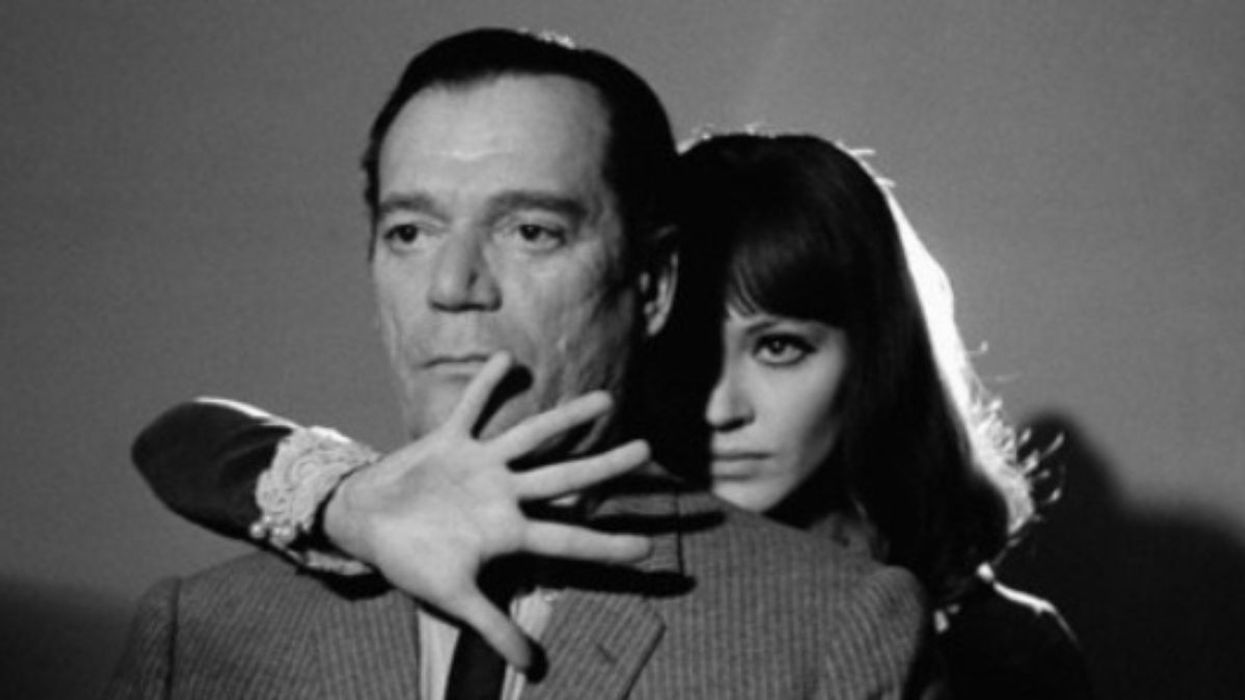Inspire Yourself with Creative Restrictions in These 3 Single-Location Shorts
In film, every artistic decision is, by necessity, an economic one.

Many short filmmakers plan their films around their locations, taking stock of their resources before they even set pen to pad (or fingers to keyboard, as the case may be). Take Jean Luc-Godard's low-budget feature, the revolutionary sci-fi film Alphaville, which created a futuristic otherworldly production design entirely from 1960s Paris:
But creative constraints need not be, well, constraining. In fact, they can be liberating. In this Light Film School article, Courtney Hope sings the praises of shooting your short in one location. "You can keep your film contained in scale without necessarily constricting the story," she writes. "Some stories lend themselves quite naturally to the confines of a single space. Others are even augmented by it, making the location its own character and player in the drama."
Check out these three single-location shorts to get some inspiration for your own.
Momentum (2013), directed by Boris Seewald, makes creative use of its single location — "a space that resembles a prison cell" — and by using creative editing to create the titular sense of movement, it manages to serve as a great reminder that production design make it much more than it appears.
"You can keep your film contained in scale without necessarily constricting the story."
In A Reasonable Request (2015), directed by Andrew Laurich, "a desperate son reconnects with his estranged father to ask an unspeakable favor that will change their lives forever.” The film's single location is a diner, a setting that has appeared in more films than there are diners (well, almost). But Laurich uses the anonymous nature of the diner — its very banality — to allow the story to take precedence.
"The fact that the action is essentially a single conversation in a single location in no way detracts from its punch; rather, the limitation invites us to focus on the characters and what they’re saying to each other," writes Hope. It's a testament to the power of the story that this short is an official selection of this year's SundanceandSXSW, as well as a Vimeo Short of the Week.
Exit (2013), directed by Daniel Zimbler, takes place entirely at a country manor in early-20th century Edwardian England, where “a parlor trick becomes a bewitching – and one of the guests gets his dark desire.”
At first blush, Exit seems to have an extravagant location, but the claustrophobic short limits itself to the drawing room of the sprawling manor home.
Exit's synopsis is perfectly suited for its set: during a celebration for two newlyweds, the mood turns tense and, in an enigmatic attempt to lighten the tension, "one of the guests proposes a parlor trick, claiming he can make one of the guests disappear so completely that it would be as if they had never existed at all." As noted, horror is a genre particularly suited to the single location. The first years of the century have brought moviegoers, to name a few, Paranormal Activity, The Strangers, indies like Session 9, and artsy brutality like Funny Games; horror makes a virtue of constricted movement. (Though as features, none of these films are dogmatic about confining themselves to one location.) In each film, the lack of exit constructs "a trap from which the protagonist must escape," whether literally or psychologically.
"When you work with limitations instead of against them, they turn from enemy to friend."
Each of these shorts uses its single setting to create a singular experience. A short film is a gut punch, not a 12-round fight; it's a short story, not a novel; and it certainly isn't a feature. Ideally, though, a narrative short is a showcase for your storytelling ability, and if you can tell that story for a dime, you're more likely to be handed a dollar down the line.
These films demonstrate how one location allows a filmmaker to concentrate on story instead of setups, location moves, and the hundred other details that multiply on all films with every added detail. But, at least in part, people make shorts to teach themselves, and if you can learn to think big and shoot small, then the size of the set — or number of locations — won't matter.
Source: 3 Examples of Single-Location Short Films to Inspire You












